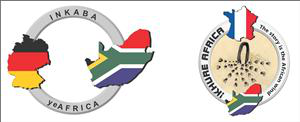Speaker
Ms
Nokwazi Purity Nkosi
(Hartebeesthoek Radio Astronomy Observatory:Space Geodesy)
Description
The Hartebeesthoek Radio Astronomy Observatory, in collaboration with the Observatoire de la Côte d’Azur (OCA) and NASA are developing a dual Satellite/Lunar Laser Ranging system in South Africa. This project will strengthen the International Laser Ranging Service network and limit the biases caused by the under representation of satellite and lunar laser ranging in the Southern Hemisphere. The new system will be designed and developed as a permanent lunar laser ranging system with high precision laser and electronic equipment to achieve millimetre accuracy. The telescope used is a 1-m Classical Cassegrain donated by OCA. Limited technical details of the telescope exist so tests need to be conducted to determine the optical characteristics and performance of the telescope. Optical testing will determine parameters such as the reflectivity, focal lengths, radii of curvature, aberrations in the mirrors and the overall quality of the optical system. The primary mirror and its support structure will both be analysed by finite element analysis software to determine gravitational distortion. Taking into account the mirror weight, thickness and glass type, we can determine the deformation error of the mirrors and see how that affects the image quality of the telescope. Based on the RMS wavefront variation over the optical surface, estimation can be made on how good the mirror was figured. The accuracy of the technique will be verified once the optical quality of the system has been established through a star test. A mirror of high quality should yield a surface accuracy of approximately 25 nm rms. A coudé path will be created by directing a laser beam into and through the telescope via a connecting tube and a set of reflective mirrors. A high quality mirror will mean minimal loss of light in each reflection through the coudé optical path. We report on progress to date and describe the tests conducted and instruments built.
Primary author
Ms
Nokwazi Purity Nkosi
(Hartebeesthoek Radio Astronomy Observatory:Space Geodesy)
Co-authors
Prof.
Ludwig Combrinck
(HartRAO)
Dr
Mulemwa Akombelwa
(UKZN)

